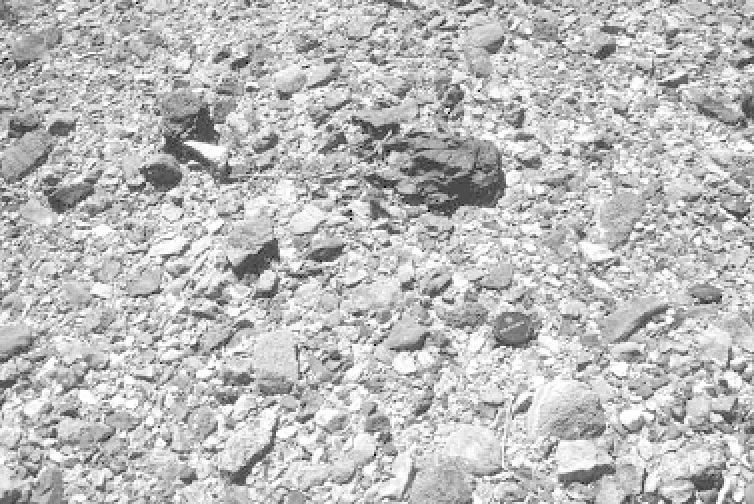Geology Reference
In-Depth Information
Plate 12.1
Lag deposits lying on a stone pavement, Dhakla, Western Desert, Egypt.
(
Photograph by Tony Waltham Geophotos
)
names - desert pavements in the USA, gibber plains in
Australia,
gobi
in Central Asia, and
hammada
,
reg
,or
serir
in the Arab world.
Hammada
is rocky desert, in
which the lag consists of coarse, mechanically weath-
ered regolith.
Serir
is pebbly desert with a lag of rounded
gravel and coarse sand produced by deflation of alluvial
deposits.
by deflation (Figure 12.2; Plate 12.2). In size, they range
from a few metres wide and only centimetres deep, to
kilometres across and tens of metres deep. The largest
known pan, which was discovered in eastern Australia, is
45 km wide. Pans are prominently developed in southern
Africa, on the High Plains of the USA, in the Argentinian
pampas, Manchuria, western and southern Australia, the
west Siberian steppes, and Kazakhstan (Goudie 1999).
They sometimes have
clay dunes
or
lunette dunes
formed on their leeside that are composed of sandy, silty,
clayey, and salty material from the pan floor. The pres-
ence of a lunette is a sure sign that a pan has suffered
deflation. The evolution of pans is a matter of debate
(Box 12.1).
Deflation appears to have played a starring role in
scooping out great
erosional basins
, such as the large
oasis depressions in the Libyan Desert. However, such
large basins are almost certain to have had a complex
evolution involving processes additional to deflation,
including tectonic subsidence. The deepest of such
basins is the Qattara Depression in northern Egypt,
which is cut into Pliocene sediments. At its lowest
point, the Qattara Depression lies 134 m below sea
level.
Deflation hollows and pans
Deflation can scour out large or small depressions called
deflation hollows
or
blowouts
. Blowouts are the com-
monest landforms produced by wind erosion. They are
most common in weak, unconsolidated sediments. In
size, they range from less than a metre deep and a few
metres across, through enclosed basins a few metres deep
and hundreds of metres across (pans), to very large fea-
tures more than 100 m deep and over 100 km across.
They are no deeper than the water table, which may be
several hundred metres below the ground surface, and
may attain diameters of kilometres.
Pans
are closed depressions that are common in many
dryland areas and that seem to be at least partly formed

